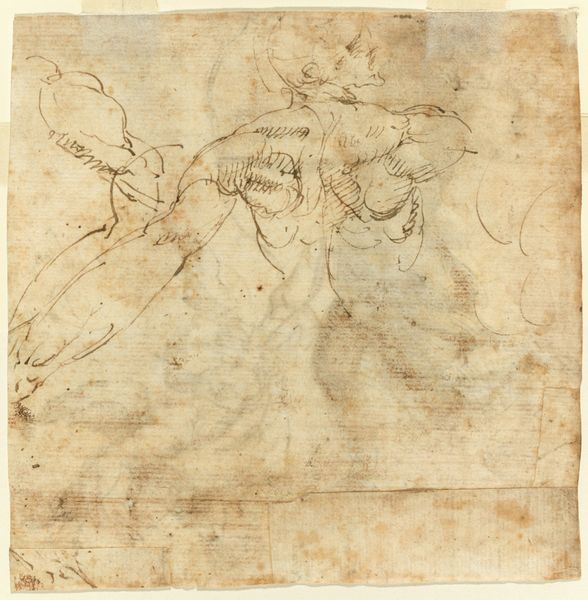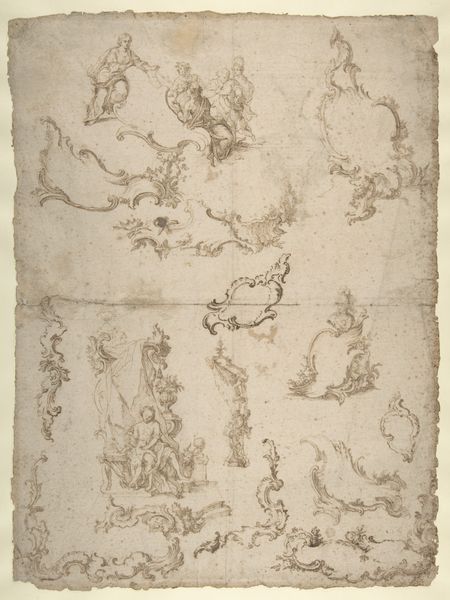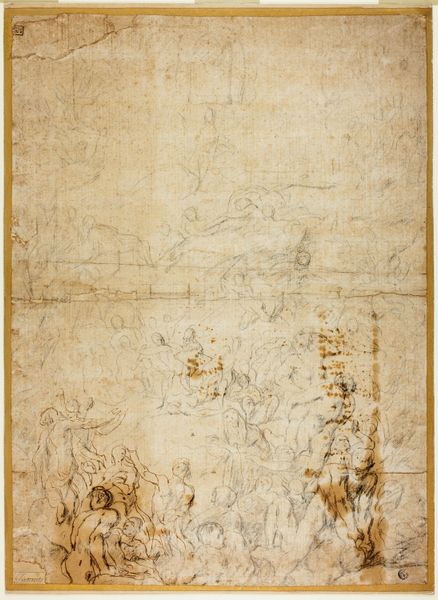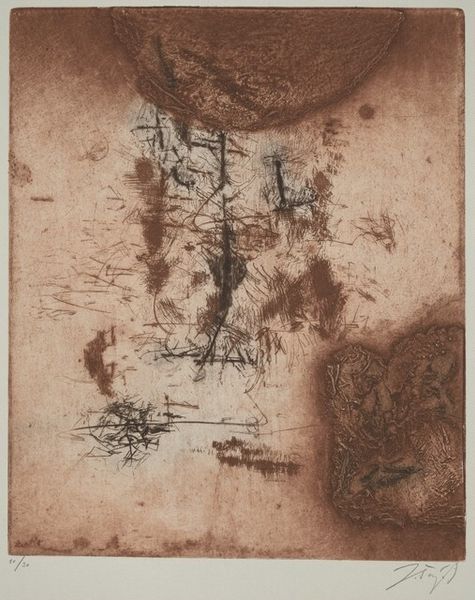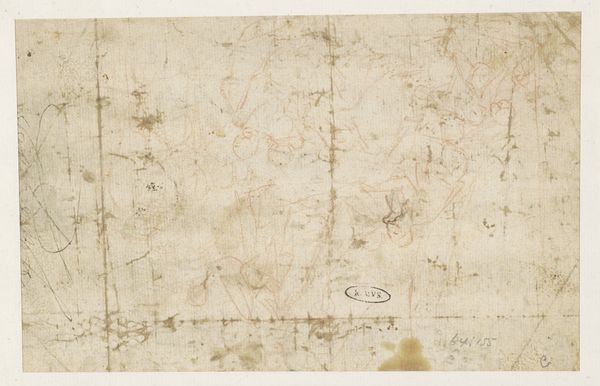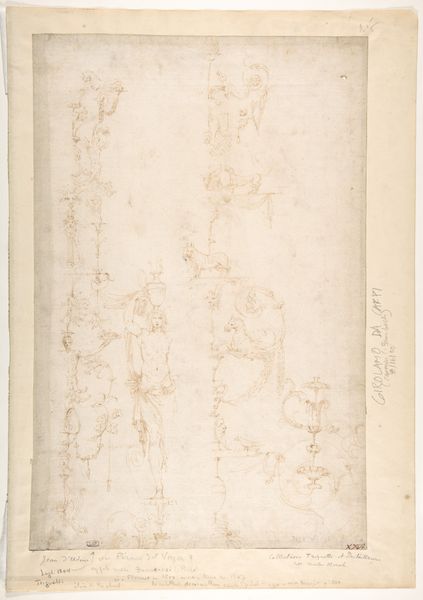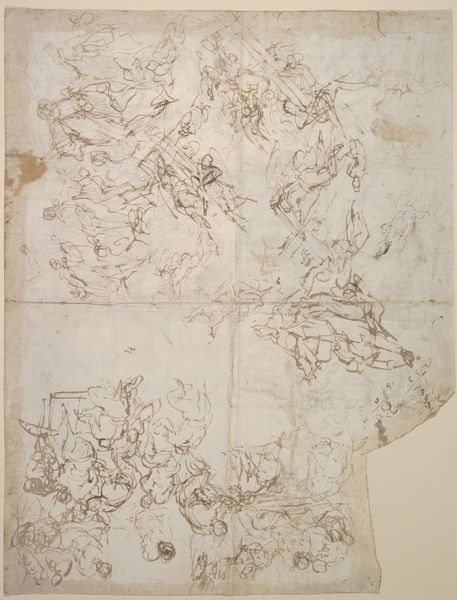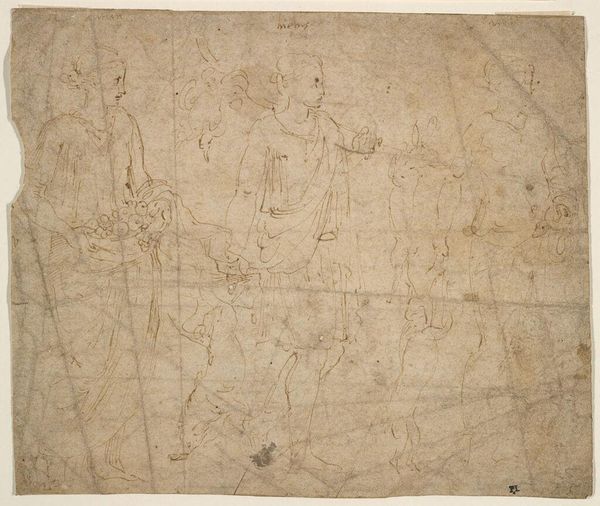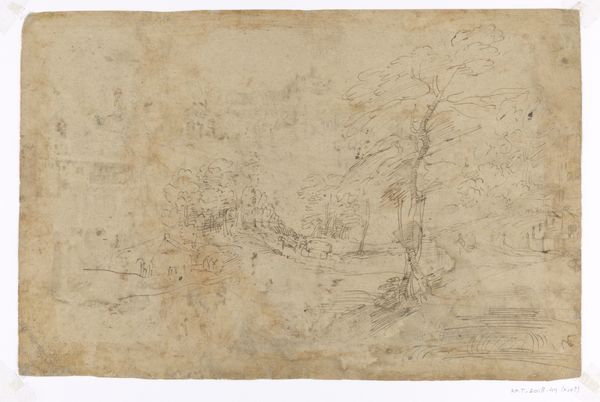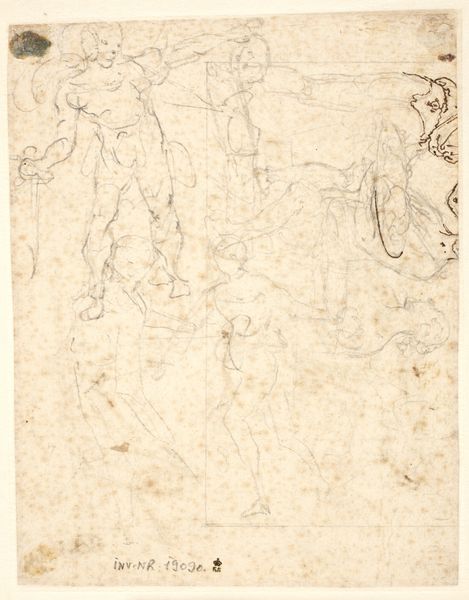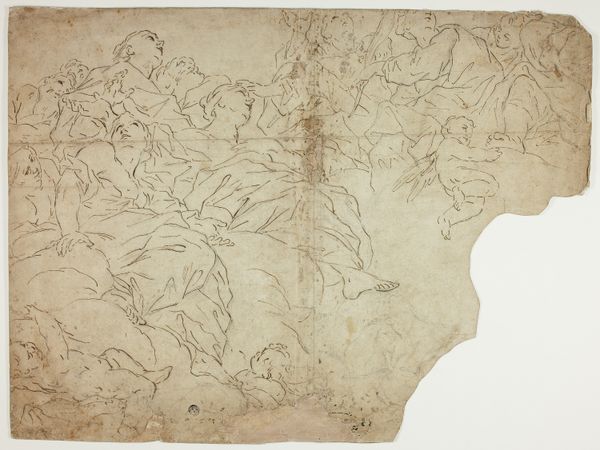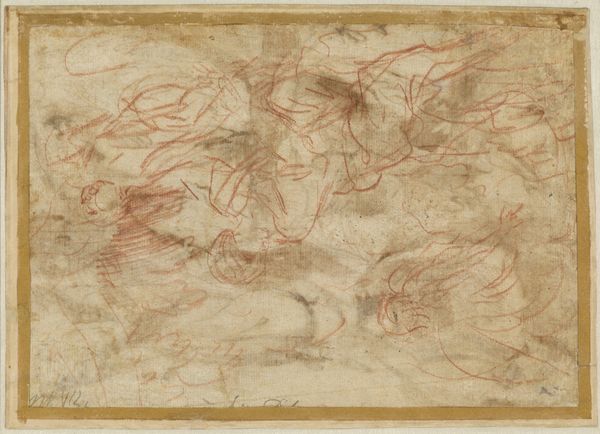
drawing, paper, ink
#
portrait
#
drawing
#
ink painting
#
figuration
#
paper
#
11_renaissance
#
ink
#
coloured pencil
#
history-painting
#
academic-art
Dimensions: 379 mm (height) x 260 mm (width) (bladmaal)
Editor: Here we have a drawing on paper titled "Delvist optegning af recto," created sometime between 1515 and 1547 by an anonymous artist. It features ink sketches of figures amidst clouds. What strikes me is the sketch-like quality - it feels very immediate, almost like a study. What can you tell me about its historical context? Curator: This drawing provides a fascinating glimpse into the artistic processes of the Renaissance, when the status of artists was evolving. While considered 'anonymous' now, such sketches, were often produced within a workshop context, and could be preparatory works for larger commissions like frescoes or altarpieces. Editor: A preparatory drawing? So, it’s likely related to a larger project? Curator: Precisely. Think about the culture of workshops at the time. Apprentices learned by copying, and masters planned out compositions with numerous sketches. The academic art style, with its emphasis on idealized forms and historical narratives, wouldn't just spring forth fully formed. Consider how this relates to our understanding of artistic creation as divinely inspired,versus craft, as well. Editor: It’s interesting to think about artmaking in that collaborative way. Were such drawings usually displayed, or were they just working documents? Curator: That’s a crucial question. While some drawings were indeed valued as works of art in their own right, many others like this one, were primarily tools of the trade. Only later, with shifts in collecting habits and the rise of art history, did they gain wider public visibility. What does this say about value? Do we value these drawings because they are finished works, or because they were part of creating something 'important?' Editor: That makes me think about how our modern concept of the 'artist' differs so much from what it was back then. Thanks for giving me a new perspective! Curator: Indeed! Reflecting on these distinctions broadens our understanding of not just art, but the ever-evolving cultural institutions that shape its meaning.
Comments
No comments
Be the first to comment and join the conversation on the ultimate creative platform.
